In the fast-paced marketing world, businesses constantly seek innovative ways to capture their target audience’s attention. While online advertising continues to dominate the landscape, traditional forms of advertising, such as billboard advertising, have stood the test of time.
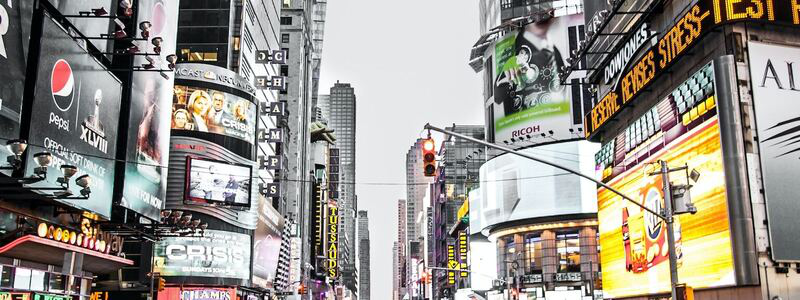
Billboard Advertising: Definition and History
Billboard advertising refers to displaying promotional messages and visuals on large, strategically placed boards typically located alongside busy roads and highways. These towering displays serve as a captivating means of communication, capturing the attention of passing motorists and pedestrians alike.
The history of billboards traces back to the early 19th century when Jared Bell pioneered what is considered the first traditional billboard poster in the United States. These large signs were initially used to promote shows and events, capturing the attention of a vast audience. Over time, laws were enacted in the 1860s, allowing businesses to purchase outdoor space for billboards, which led to increased advertising opportunities. As the popularity of automobiles grew in the early 1900s, billboards became a prominent marketing medium, especially with the development of the Interstate Highway System in the 1950s.
Today, billboards have evolved with technological advancements, including digital displays.
So, does billboard advertising work? Let’s delve deeper into its effectiveness and explore the benefits of this dynamic marketing strategy.
Advantages of OOH advertisements
Out-of-home (OOH) advertising (or street advertising) encompasses various forms, including billboards, posters, and digital displays. These captivating outdoor mediums allow businesses to engage with their target audience in memorable ways.
- Wide Reach and High Visibility
Billboards offer unparalleled visibility due to their large size and strategic placement. With millions of people commuting daily, billboard ads can reach a vast audience, effectively generating brand awareness and driving consumer engagement.
- Continuous Exposure
Unlike other forms of advertising that can be easily ignored or skipped, billboards provide continuous exposure. Commuters often encounter the same billboards during their daily routines, reinforcing the brand message and ensuring a lasting impact.
- Targeted Advertising
Static or digital billboards can be strategically placed in specific locations and may address targeted demographic if needed.
- Cost-Effectiveness
Billboard advertising offers a cost-effective means of reaching a wide audience. Compared to other forms of media, such as television or radio, billboards provide a longer exposure time at a fraction of the cost, making them an attractive option for businesses with limited marketing budgets.
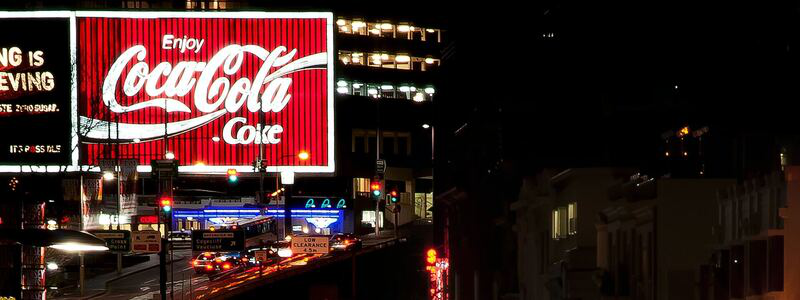
Creating a Successful Campaign
To create a successful billboard campaign, several best practices should be followed.
First and foremost, understanding the target audience is crucial. By identifying their demographics, interests, and behaviors, advertisers can tailor their messages and visuals to resonate with the intended viewers.
Additionally, simplicity and clarity are key. Static billboards have limited space, so it’s important to deliver a concise and impactful message that can be easily comprehended within a few seconds. Bold and legible fonts, the right colors and attention-grabbing visuals will help ensure the message stands out.
Strategic billboard placement is another essential factor. Identifying high-traffic areas, such as busy intersections or highways, will maximize the exposure of the billboard. Additionally, considering the viewing angle and distance is vital for motorists or pedestrians to ensure readability.
Moreover, incorporating a call-to-action is crucial to drive consumer behavior. Whether it’s visiting a website or physical store or making a purchase, a clear and compelling call-to-action will guide viewers on the next steps to engage with the brand.
Finally, tracking and analyzing the campaign’s performance is essential. Utilizing technologies like geolocation data, footfall tracking, and audience measurement tools can provide valuable insights into the effectiveness and ROI of the campaign. By continuously evaluating and optimizing the campaign based on these insights, advertisers can maximize the impact of their advertising efforts.
Billboard advertising continues to evolve as a powerful marketing strategy, delivering engaging brand experiences to a wide audience.
Have a look at the following examples of successful billboards campaigns:
- Airbnb’s Impact Campaign: Airbnb wanted to showcase its positive impact on hosts and travelers in New York City. They strategically placed ads on digital billboards near City Hall, targeting locals and government officials who proposed strict regulations for house rentals. The creative featured stories of responsible hosts, highlighting the positive effects of Airbnb.
The campaign reached over 1 million New Yorkers, positively influencing the conversation around housing regulations. - Apple’s “Shot on iPhone” Campaign: Apple launched a global campaign to promote the camera capabilities of the iPhone 6. They asked iPhone users to submit their best photos with the hashtag #ShotoniPhone. Apple then selected photos from around the world to display on billboards and media outlets. The goal was to generate buzz and get people talking about the new iPhone 6.
The campaign successfully showcased the quality of the iPhone’s camera and engaged users worldwide. - Spotify’s Irreverent Billboard Campaign: Spotify used billboards and online ads to create highly targeted and localized advertisements. The campaign featured witty and relatable messages that resonated with Spotify’s audience. The goal was to show that Spotify understands its users and offers a platform where they can be themselves.
The campaign contributed to Spotify’s growth, increasing paying subscribers.
These examples highlight the effectiveness of creative and well-executed billboard campaigns in capturing attention, conveying brand messages, and achieving specific marketing objectives.
Innovations in OOH Advertising
OOH advertising, specifically billboards, has undergone significant innovations, leveraging new technologies to enhance impact and effectiveness. One notable innovation is the introduction of digital billboards. These dynamic displays allow for the rotation of multiple advertisements, providing advertisers with more flexibility and creativity in their campaigns. Digital billboards can deliver eye-catching visuals, vibrant colors, and motion graphics to captivate viewers’ attention. With the ability to change messages quickly and remotely, digital billboards offer a level of versatility that traditional static billboards cannot match.
Another exciting development is the integration of augmented reality (AR). AR ads blend the physical world with digital overlays, creating an interactive and immersive experience for viewers. People can use mobile devices or specialized apps to engage with billboards in real time, accessing additional information, interactive games, or even virtual try-on experiences. This integration of AR technology elevates the engagement level and encourages a deeper connection between the brand and the audience.
Is OOH Worth It? Billboard Advertising ROI
With digital technologies and innovative billboard designs, billboard advertising has become more impactful. The question remains: does billboard advertising work? The statistics suggest a resounding yes.
According to Statista, in 2022, OOH spending in the United States reached approximately 8.6 billion dollars, with billboard ads accounting for over 70% of the total. This staggering investment demonstrates the effectiveness of billboard advertising in capturing audience attention.
Data published by Statista in 2021 revealed that the entertainment and leisure industry expenditure on OOH advertising in Puerto Rico grew by 85% that year.
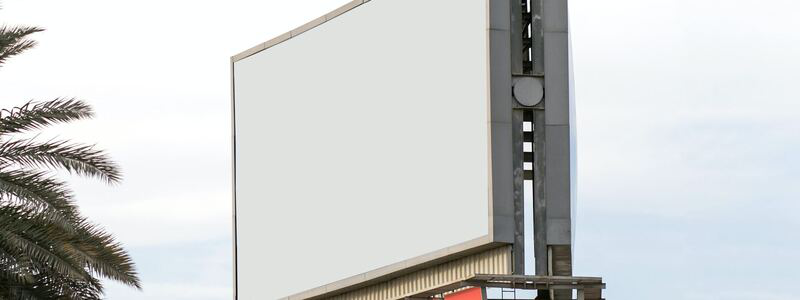
Billboards vs. other advertising methods
When it comes to cost-effectiveness, billboard advertising stands out as an advantageous option compared to other advertising methods.
Television Commercials
- Expensive, with costs ranging from $15,000 to $100,000 for a 30-second spot.
- Offer broad exposure but can strain budgets.
Radio Advertising
- Radio advertising is mainly local or regional, which can limit the audience.
- Cost varies depending on the time of day, the ad’s duration, and the radio station’s popularity.
- In New York, a rough estimate for a 30-second ad is $1,400; in Illinois $360; and in Las Vegas, it can be as low as $100.
Print Advertising
- Can be costly, with full-page ads in local magazines ranging from $900 to $1200.
- Provides targeted reach but incurs recurring fees.
Billboard Advertising
- Budget-friendly alternative.
- Prices start from around $60 per day for static billboards.
- Enables continuous exposure to a larger audience without recurring fees.
- Provides cost-effective widespread visibility.
Digital Out-of-Home (DOOH) Advertising
- A rising trend in billboard advertising.
- Expected to account for over one-third of total expenditure on out-of-home media by 2023.
- Offers dynamic features like videos, interactive ads, and 3-D technology.
- Prices start from $500 or $700 per day for digital billboards.
In summary, billboard advertising emerges as a cost-effective option compared to television and print advertising. It offers continuous exposure, a wider reach, and the flexibility of static or digital formats. The advent of digital out-of-home advertising further enhances its cost-effectiveness, providing engaging and dynamic features that captivate audiences.
Is there potential in OOH advertising for the future?
As technology advances and consumer behavior evolves, the advertising landscape constantly changes.
Street advertising and static billboards remain powerful and effective mediums for reaching a wide audience.
These traditional forms of advertising provide a physical presence and can capture the attention of passersby. Strategic placement in high-traffic areas ensures maximum visibility and exposure.
Digital billboards have revolutionized the out-of-home advertising space by offering dynamic and interactive content. With the ability to display multiple ads in rotation, digital billboards provide advertisers with flexibility and the opportunity to deliver targeted messages. Furthermore, integrating technologies like augmented reality (AR) and data-driven targeting can enhance the effectiveness of billboard campaigns, creating engaging and personalized experiences for consumers.
The potential for growth in the advertising industry lies in blending traditional and digital approaches. By combining the strengths of both static and digital billboards, advertisers can create impactful campaigns.
Overall, the future of billboard and street advertising is promising. As long as advertisers embrace innovation, adapt to changing consumer behaviors, and leverage the power of technology, billboards will continue to be a vital component of the advertising mix.
Static or Digital? bMedia Group has it all!
In Puerto Rico, bMedia Group stands at the forefront of the out-of-home advertising segment. With a strong presence in the market, our expert team can guide you through a diverse range of OOH advertising solutions, including an extensive network of static and digital billboards, plus posters at prime spots like gas stations and restaurants.

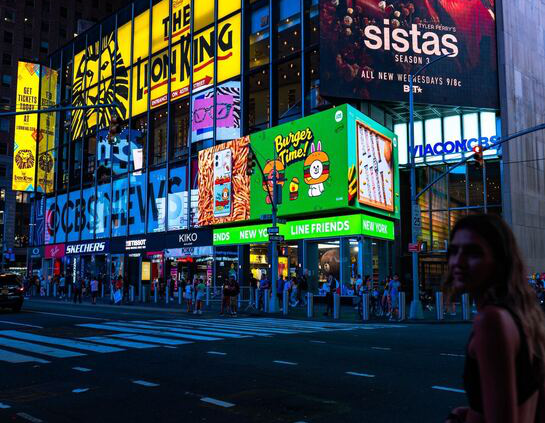
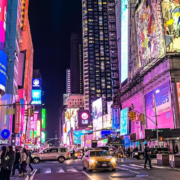

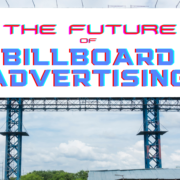
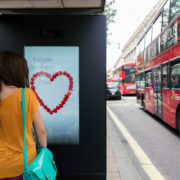
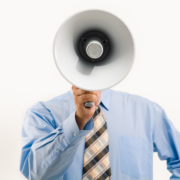




 787 792 4113
787 792 4113
